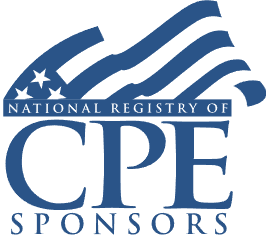New Section 514(c) Fractions Rule Guidance for Exempt Orgs: Avoiding UBTI in Real Estate Partnership Investments
TBD

Course Details
- smart_display Format
On-Demand
- signal_cellular_alt Difficulty Level
Intermediate
- work Practice Area
Accounting
- event Date
Tuesday, October 3, 2017
- schedule Time
1:00 PM E.T.
- timer Program Length
110 minutes
-
BARBRI is a NASBA CPE sponsor and this 110-minute webinar is accredited for 2.0 CPE credits.
-
BARBRI is an IRS-approved continuing education provider offering certified courses for Enrolled Agents (EA) and Tax Return Preparers (RTRP).
-
Live Online
On Demand
This course will provide advisers to tax-exempt organizations with a practical guide to the fractions rule, which governs the tax implications of allocations between tax-exempt partners and taxable partners. The panel will detail recent IRS guidance permitting certain partnership allocations that may have otherwise violated the fractions rule. The webinar will define the specific issues and challenges the fractions rule presents for exempt organizations in designing an investment strategy.
Description
The partnership “fractions rule” of Section 514(c)(9)(E) has a well-deserved reputation among tax advisers and counsel as an intimidating tax trap for exempt organizations investing in real estate partnerships. The rule represents the intersection of UBTI and partnership allocations and creates a significant challenge to partnerships in designing appropriate allocations. This often discourages exempt organizations from investing directly in real estate partnerships, particularly those with debt financing.
The rule generally provides that partnerships with “qualified organizations” as partners may not allocate a percentage share of partnership income to a qualified organization in any year that is higher than their share of overall partnership loss in any tax year where such share of the loss is the smallest. All partnership allocations must also have “substantial economic effect” within the meaning of Section 704(b)(2). However, the multiple exceptions in the Section 514(c)(9) rules and regulations make applying the rules particularly complex.
The IRS recently issued proposed regulations to simplify the tax burden on exempt organizations investing in real estate partnerships. Under the proposed regulations, partnerships would be allowed to make allocations consistent with common business practices, although some questions still remain. The changes are generally taxpayer-friendly and may (if finalized) provide opportunities for reduced tax liabilities for exempt organizations that invest in fractions-rule compliant partnerships. Tax advisers must understand the application of the regulations to avoid costly tax consequences.
Listen as our experienced panel of exempt organization advisers provides a thorough and practical guide to navigating the complexities of the fractions rule in light of the proposed regulations.
Outline
- UBTI rules of Section 512 in partnership context
- Section 514(c)(9)(E) fractions rule defined
- Analysis and tests to determine if fractions rule applies
- REG-136978-12 proposed changes to fractions rule treatment
- Issues and practices in fractions rule compliant partnership agreements
Benefits
The panel will discuss these and other important issues:
- Qualified organizations and transactions that give rise to the “fractions rule”
- Previously prohibited allocations which may be permissible under the proposed regulations
- Curative allocations in a fractions-rule compliant partnership agreement—and when to use them
NASBA Details
Learning Objectives
After completing this course, you will be able to:
- “Qualified organizations” and transactions that give rise to the “fractions rule”
- Previously prohibited allocations which may be permissible under the proposed regulations
- Curative allocations in a fractions-rule compliant partnership agreement—and when to use them
- Field of Study: Taxes
- Level of Knowledge: Intermediate
- Advance Preparation: None
- Teaching Method: Seminar/Lecture
- Delivery Method: Group-Internet (via computer)
- Attendance Monitoring Method: Attendance is monitored electronically via a participant's PIN and through a series of attendance verification prompts displayed throughout the program
- Prerequisite: Three years+ nonprofit business or firm experience at mid-level within the organization, completing complex forms and schedules and supervising other attorneys.Specific knowledge and understanding of partnership structure, operating agreements and liquidation, including partner capital accounts, allocation and distributions; familiarity with the unrelated business taxable income regulations of IRC section 512.

Strafford Publications, Inc. is registered with the National Association of State Boards of Accountancy (NASBA) as a sponsor of continuing professional education on the National Registry of CPE Sponsors. State boards of Accountancy have final authority on the acceptance of individual courses for CPE Credits. Complaints regarding registered sponsons may be submitted to NASBA through its website: www.nasbaregistry.org.

Strafford is an IRS-approved continuing education provider offering certified courses for Enrolled Agents (EA) and Tax Return Preparers (RTRP).
Unlimited access to premium CLE courses:
- Annual access
- Available live and on-demand
- Best for attorneys and legal professionals
Unlimited access to premium CPE courses.:
- Annual access
- Available live and on-demand
- Best for CPAs and tax professionals
Unlimited access to premium CLE, CPE, Professional Skills and Practice-Ready courses.:
- Annual access
- Available live and on-demand
- Best for legal, accounting, and tax professionals
Unlimited access to Professional Skills and Practice-Ready courses:
- Annual access
- Available on-demand
- Best for new attorneys
Related Courses
Recommended Resources
Gain a Competitive Edge Through Efficient CPE Strategies
- Learning & Development
- Business & Professional Skills
- Career Advancement
